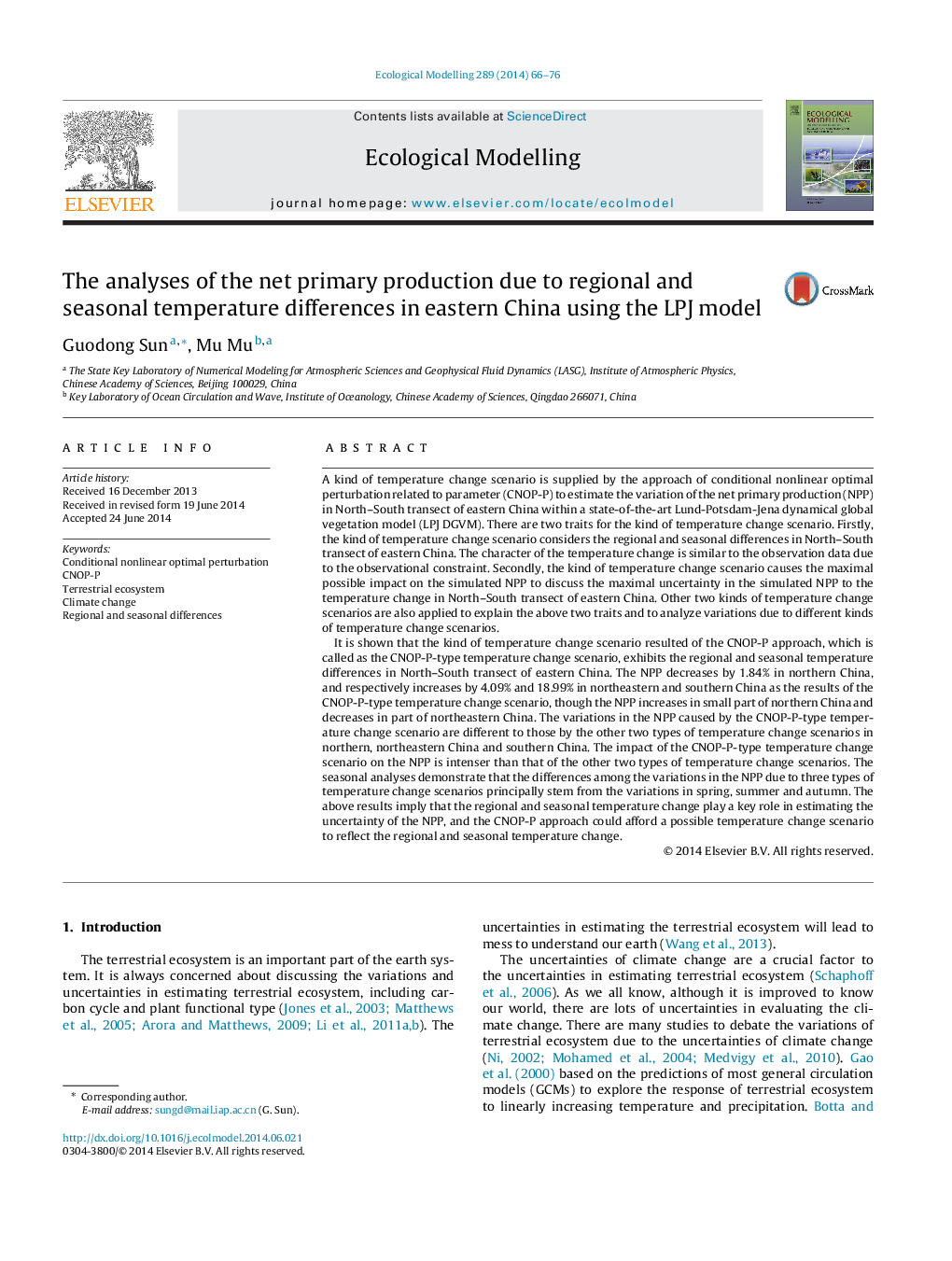| Article ID | Journal | Published Year | Pages | File Type |
|---|---|---|---|---|
| 6296818 | Ecological Modelling | 2014 | 11 Pages |
Abstract
It is shown that the kind of temperature change scenario resulted of the CNOP-P approach, which is called as the CNOP-P-type temperature change scenario, exhibits the regional and seasonal temperature differences in North-South transect of eastern China. The NPP decreases by 1.84% in northern China, and respectively increases by 4.09% and 18.99% in northeastern and southern China as the results of the CNOP-P-type temperature change scenario, though the NPP increases in small part of northern China and decreases in part of northeastern China. The variations in the NPP caused by the CNOP-P-type temperature change scenario are different to those by the other two types of temperature change scenarios in northern, northeastern China and southern China. The impact of the CNOP-P-type temperature change scenario on the NPP is intenser than that of the other two types of temperature change scenarios. The seasonal analyses demonstrate that the differences among the variations in the NPP due to three types of temperature change scenarios principally stem from the variations in spring, summer and autumn. The above results imply that the regional and seasonal temperature change play a key role in estimating the uncertainty of the NPP, and the CNOP-P approach could afford a possible temperature change scenario to reflect the regional and seasonal temperature change.
Keywords
Related Topics
Life Sciences
Agricultural and Biological Sciences
Ecology, Evolution, Behavior and Systematics
Authors
Guodong Sun, Mu Mu,
